Millions of people each year suffer from yeast infections and the big question on all their minds is how to treat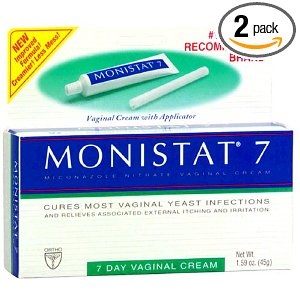 a yeast infection? In this article we will look at some of the answers to that question. Whether home remedy or treatment in the hospital, yeast infections can require a wide range of remedies.
a yeast infection? In this article we will look at some of the answers to that question. Whether home remedy or treatment in the hospital, yeast infections can require a wide range of remedies.
How to Treat a Yeast Infection: Causes and Symptoms
Yeast Infections come in many forms and can affect any part of the body, inside and out. The most common areas to develop infections are:
- Genitals
- Mouth
- Throat
- Skin
- Blood
It’s here that you find the most yeast infections, and although diagnosis should be made by a trained medical professional, you will notice several symptoms which might give you clues on how to treat a yeast infection.
- Itching and Scratching
- Redness and Swelling
- General Irritation and Discomfort
- Burning/Pain
- Red Spots, Sores, or Dry skin
- Various Forms of Discharge
Where do all these symptoms come from? What causes them and creates the need to know how to treat a yeast infection? Part of your normal body flora is the elaborate cocktail composed of both “good” and “bad” germs. In a normal, healthy state the good germs can squelch the bad germs and all their effects. It’s when the body’s Immune System is taxed or overwhelmed that the bad germs increase and cause illness.
- Contact with a person who already has an active yeast infection
- Certain diseases (Diabetes and HIV)
- Illness (repressed Immune System)
These are some of the conditions that can allow the overgrowth of the fungus cells known as Candida albicans. It is always present in and on your body, and if it is not controlled you will be needing to find out how to treat a yeast infection.
How to Treat a Yeast Infection: Diagnosis
It’s important to note that the symptoms that accompany a yeast infection also occur in other illnesses. Often when someone tries to self-diagnose they get it wrong (some studies suggest this happens some 30% of the time.) If that occurs and you treat your condition with the incorrect remedy, you could end up exacerbating the situation.
For a true diagnosis you would need to go see your physician. To get a proper diagnosis and find out how to treat a yeast infection, your doctor might:
- Give you a visual and physical examination
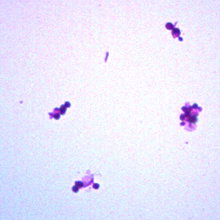 Stained slide of C. albicans.
Stained slide of C. albicans. - Scrape the infection and then treat it with a substance that kills all cells but the Candida cells; then look at it under a microscope
- Swab the infected area and then use it to grow cultures in a Petri Dish
With these test results your physician can diagnose you and then give you the proper care.
How to Treat a Yeast Infection: Treatment
Most treatments for yeast infections are based in some way on antifungal medication, as yeast is a form of fungus. There are multiple Ways to Treat Yeast Infections.
1. Medications to Treat Yeast Infections
- Prescription – usually the only difference between prescription and OTC yeast infection medications is the strength of active ingredients. They are often the same medicine.
- Over the Counter (OTC)
- Clotrimazole – Lotrimin, Mycelex
- Miconazole – Monistat, Micatin
- Terconazole – Terazol
- Antibiotics to Treat Yeast Infection
These are not the only medications used, but are by far the most common. If a person were to develop the more series yeast infection known as Candidemia (infection in the bloodstream,) they would require high powered IV medications, administered in the hospital.
2. Home Remedies
- OTC medications (works well most of the time)
- Probiotics (Replacing lost good germs through supplements)
- Diet (yogurts and low glycemic)
- Various (Grapefruit Seed Extract, applying buttermilk or yogurt to the infection directly, salt or garlic application)
Some of the more radical sounding ideas of how to treat a yeast infection will need to be investigated thoroughly before use. It’s a good idea to check with your physician if you’re not sure about something.
3. Diet
- We will give diet its own category as this is not only curative, but also preventative, and may be the best action step for how to treat a yeast infection.
- As yeast feeds on sugar, the lower your blood sugar the less food there is for the fungus to eat, and the less likely that it will bloom.
4. Hygiene and Sexual Conduct
- Proper Hygiene (keeps the germ cocktail balanced)
- Avoid sex with anyone exhibiting symptoms of a yeast infection
- Avoid sex if you are exhibiting any symptoms
- Always shower before and after sexual contact
Partners often pass yeast infections back and forth if they continue to engage in sex while either has symptoms, and sometimes even when there are no symptoms. Wait an appropriate amount of time before sex after your infection “goes away”.
How to Treat a Yeast Infection
When trying to determine the best way in how to treat a yeast infection, you should look at all your options, including seeking medical assistance. The remedies can range from OTC drugs to IV medication in the hospital. It’s important to know which is right for you. Do your homework, consult a doctor if you need to, and then decide how to treat a yeast infection.

Which is NOT one of the main yeast infection drugs?
a. Clotrimazole
b. Miconazole
c. Terconazole
d. Stincfutazole
True or False: Monistat is the brand name of Terconazole.
a. True
b. False
Which would say is the most irritating symptom of Candida albicans?
a. Itching
b. Burning
c. Pain during sex
d. Discharge
Answers at the bottom of the page!

Yeast Infection No More
Do you suffer from Yeast Infections? Have you had chronic occurrences of this irritating, sometimes dangerous condition? If so, then you need to check out the Yeast Infections No More eBook by Linda Allen. Allen is a 15 year:
• Medical Researcher
• Nutritionist
• Health Consultant
• Former sufferer of Yeast Infections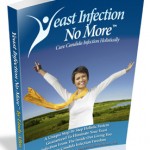
With her new “all natural”, holistic 5 step system she has made it possible to get immediate relief from all outward Yeast Infection symptoms within 12 hours. But her remedy goes beyond the basic symptoms. Used as directed, Allen’s system can get rid of all Yeast Infection within about 2 months.
That means no more:
• Redness
• Swelling
• Rashes
• Itching
• Scratching
• Swelling
• Discharge
• Odor
If you suffer from Yeast Infections, Yeast Infections No More can help you achieve the relief you so desperately need.
It’s not just for women either. Allen’s system can work for men and women, both young and old. It can be the key to a life free from the irritating and potentially harmful effects of Candida albicans (yeast infection fungus,) for anyone. With a 100% Money Back Guarantee for 60 days, why hesitate. Try out this revolutionary cure and live Yeast free!
Yeastrol Natural Homeopathic Relief from Yeast Infections
Are you tired of all those 3 to 27 step “methods“ to follow in order to get relief from a Yeast Infection? Would you like to be able to rely on something much less involved? If that’s you, then try Yeastrol Natural Homeopathic Relief from Yeast Infections. With Yeastrol you can have the relief you seek from:
• Itching and Scratching
• Redness and Swelling
• Embarrassing Discharge and Odor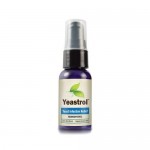
• Painful Sex
It’s time to get rid of these irritating and potentially serious symptoms.
Yeastrol is a spray. Doesn’t that sound simple? That’s all it takes to get relief from a Yeast Infection, and with just 2 sprays at a time, 3 times day, you can experience fast, effective relief from the conditions that are making you miserable.
This safe, homeopathic treatment reduces and eliminates symptoms in both men and women of all ages. Those who have tried Yeastrol, and use it consistently like instructed, have come to swear by it. They notice:
• Some quick relief of symptoms (within 12 hours)
• An end to recurring infections (by 3 months)
• Complete cessation of all Yeast Infection activity (by 6 months)
If there is a drawback to Yeastrol, it’s that you have to use it for 6 months on a daily basis, but what’s that compared to the relief you get when that Yeast Infection problem you were having is completely gone?
Answers 1) d, 2) b, 3) any is acceptable

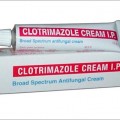
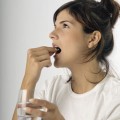
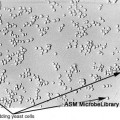
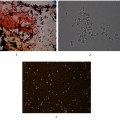

Leave a Reply